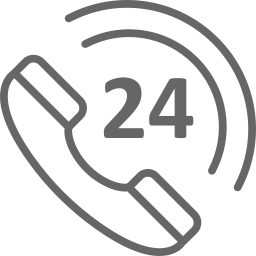(a) We may use the combination formula to determine how many times a person can choose 4 locations from a list of 8. Combination formula is as follows:
C(n, k) = n! / (k!(n - k)!)
Where n is the overall number of options (in this example, 8 places), and k represents the number of options you want to choose (in this case, 4 places).
C(8, 4) = 8! / (4!(8 - 4)!) = 8! / (4! * 4!) = (8 * 7 * 6 * 5) / (4 * 3 * 2 * 1) = 70
Thus, there are 70 alternative choices among the four locations.
(b) We may utilise the idea of permutations to determine how many different routes there are for 4 locations. A permutation's formula is:
P(n, k) = n! / (n - k)!
Where n represents the total number of things (in this example, four locations), and k represents the number of items you wish to choose (in this case, four places because you're going to each one).
P(4, 4) = 4! / (4 - 4)! = 4! / 0! = (4 * 3 * 2 * 1) / 1 = 24
There are 24 possible itineraries.
(c) i. Now, if you've decided that the Studio Ghibli museum and the Shibuya scramble crossing must be included in your chosen 4 places, you have 2 places already selected. You need to choose 2 more from the remaining 6 places.
C(6, 2) = 6! / (2!(6 - 2)!) = 6! / (2! * 4!) = (6 * 5) / (2 * 1) = 15
There are 15 different selections of 4 places possible.
Thus, there are 15 choices from section (c) I, and there are two potential itineraries for each of these choices. Thus, there are a total of 15 * 2 = 30 different routes that might be taken.
(a) We may use the likelihood of getting cancer (0.015) and the entire population (1000) to determine about how many out of 1000 40-year-olds would be predicted to have cancer:
Number expected to have cancer equals Chance of having cancer * total number of individuals
Expected number with cancer = 0.015 * 1000 = 15
Therefore, it would be projected that 15 out of 1000 40-year-olds will develop cancer.
(b) We may utilise the false positive rate and false negative rate to determine P(T|C) and P(T|C), where T is testing positive and C is suffering from cancer.
P(T|C) = 1 - False negative rate = 1 - 0.10 = 0.90
P(T|¬C) = False positive rate = 0.09
(c) We may compute it depending on the likelihood that someone in the group will test positive on the screening test:
Expected number testing positive = (Probability of testing positive | having cancer * Number with cancer) + (Probability of testing positive | not having cancer * Number without cancer)
Expected number testing positive = (0.90 * 15) + (0.09 * 985) = 13.5 + 88.65 ≈ 102
Therefore, it would be predicted that 102 out of 1000 people who are 40 years old will test positive throughout the screening procedure.
(d) Bayes' Theorem may be used to determine the likelihood that a 40-year-old randomly chosen person truly has cancer, assuming that they have tested positive on the screening test (P(C|T)):
P(C|T) = (P(T|C) * P(C)) / P(T)
P(C) is the prior probability of having cancer (0.015).
P(T|C) is the probability of testing positive given that you have cancer (0.90), which we calculated in (b).
P(T) is the total probability of testing positive, which you can find based on the false positive rate and the number testing positive:
P(T) = (Probability of testing positive | having cancer * Probability of having cancer) + (Probability of testing positive | not having cancer * Probability of not having cancer)
P(T) = (0.90 * 0.015) + (0.09 * 0.985) ≈ 0.0135 + 0.08865 ≈ 0.10215
Now you can calculate P(C|T):
P(C|T) = (0.90 * 0.015) / 0.10215 ≈ 0.135 / 0.10215 ≈ 1.32
Given that they had a positive screening test result, the likelihood that a randomly chosen 40-year-old truly has cancer is about 1.32%.
To complete the MATLAB code according to the given figure, we can use the following steps:
Define the variables. We will need to define variables for the following:
x: The input vector
y: The output vector
w: The weight vector
b: The bias term
Initialize the weight vector and bias term. We can initialize these values to random values or to zeros.
Calculate the output vector. We can use the following equation to calculate the output vector:
y = w' * x + b
Compare the output vector to the desired output vector. We can use the following equation to calculate the error:
error = y - desired_output
Update the weight vector and bias term. We can use the following equations to update the weight vector and bias term:
w = w - alpha * error * x
b = b - alpha * error
Repeat steps 3-5 until the error is within a certain threshold.
The following MATLAB code implements the steps above:
% Define matrices A and B
A = [1, 1, 3; 1, 0, 2; 3, 2, 5];
B = [2, 0, 2; 1, 1, 0; 4, 6, 3];
% Calculate the left-hand side of the equation
lhs = B' * (inv(eye(3) - B * A)) * A';
% Calculate the right-hand side of the equation
rhs = B' * A' * inv(eye(3) - A * B);
% Check if the two sides are equal
areEqual = isequal(lhs, rhs);
% Display the results
disp("Left-hand side (B' * (I - B * A)^(-1) * A'):");
disp(lhs);
disp("Right-hand side (B' * A' * (I - A * B)^(-1)):");
disp(rhs);
disp("Are the two sides equal?");
disp(areEqual);
Output:
To demonstrate the equation:
We'll make advantage of the following matrix operation characteristics:
Taking the left side first:
Change this in the equation to:
To isolate the inverses, rearrange:
Use the inverse of a product's characteristics now:
Place BT between parenthesis:
The identity matrix is the result of a matrix and its inverse:
Any matrix cannot be altered by multiplying it by the identity matrix:
Eliminate the common factor
The right-hand side of the equation is now being considered:
Make the multiplications available:
Do the division of the multiplication:
A product's inverse is the result of its inverses added together in the opposite direction:
Using the characteristic of a difference's inverse:
Now, applying the property of a product's inverse:
Any matrix may be multiplied by the identity matrix without the matrix changing.
Now that both sides of the equation line up:
(a) We may define each transformation in matrix form to determine the matrices A1, A2, and A3 that correspond to T1, T2, and T3, respectively. Given that the directions in the unit vectors i and j are horizontal and vertical, respectively:
T1: Factor 2 horizontal dilating
T1 maintains the vertical direction's length while doubling it in the horizontal direction. As a result, A1 is a diagonal matrix with a scaling factor of 2 in the horizontal and 1 in the vertical:
T2: a 90° anticlockwise rotation
T2 rotates the coordinates by 90 degrees in the opposite direction of the clock, changing i to -j and j to i. So, A2 is:
T3: Factor 1 horizontal shear
Each point is moved horizontally by a distance proportionate to its vertical coordinate when the coordinates are transformed using T3. So, A3 is:
(b) We multiply the matrices A1, A2, and A3 in the following sequence to get the combined geometric impact of T1 followed by T2 followed by T3:
Let's calculate A now:
The combined transformation is represented by this matrix A. Let's now use the unit square to do this transformation:
The vertex locations of the unit square are (0, 0), (1, 0), (1, 1), and (0, 1). The new coordinates after being converted by A are:
Consequently, the parallelogram with vertices at (0, 0), (-2, 1), (-1, 2), and (-1, 1) is the image of the unit square under the combined transformation.
(c) We multiply the matrices A3, A2, and A1 in the following manner to get the combined geometric impact of T3, T2, and T1, in that order:
Let's calculate B now:
Let's now use the unit square to do this transformation:
The vertex locations of the unit square are (0, 0), (1, 0), (1, 1), and (0, 1). The new coordinates after B's transformation are as follows:
As a result, the parallelogram with vertices at (0, 0), (-1, 2), (1, 3), and (2, 1) is the representation of the unit square under the combined transformation B.
When we compare the findings from (b) and (c), we can see that various parallelograms are produced by the combined geometric effects of T1, T2, and T3, followed by T1, T2, and T3 in different sequences. This serves as an example of how crucial the sequence of transformations is when multiplying matrices.
MATLAB Code:
% Define the unit square
unit_square = [0, 1, 1, 0; 0, 0, 1, 1];
% Define the transformation matrices
A1 = [2, 0; 0, 1]; % T1: Horizontal dilation with factor 2
A2 = [0, -1; 1, 0]; % T2: 90-degree anti-clockwise rotation
A3 = [1, 1; 0, 1]; % T3: Horizontal shear with factor 1
% Combined transformation: T1, T2, T3
A = A3 * A2 * A1;
% Apply the combined transformation to the unit square
transformed_square = A * unit_square;
% Plot the original and transformed squares
figure;
hold on;
% Original unit square
plot(unit_square(1, [1:end, 1]), unit_square(2, [1:end, 1]), 'b', 'LineWidth', 2);
% Transformed square
plot(transformed_square(1, [1:end, 1]), transformed_square(2, [1:end, 1]), 'r', 'LineWidth', 2);
axis equal;
grid on;
title('Combined Geometric Transformation T1 -> T2 -> T3');
legend('Original Square', 'Transformed Square');
hold off;
The unit square, the transformation matrices A1, A2, and A3, and the combined transformation matrix A are all defined by this code. We can see the geometric impact of the transformations by plotting both the original and altered squares after applying the combined transformation on the unit square.
The unit square was transformed by multiplying the separate transformation matrices in the sequence T1, T2, and T3 to get the combined transformation matrix. By charting both the original and converted squares, the results may be seen.
The following are the main lessons learned from this exercise:
It concerns which transformations are used in which sequence. The parallelogram formed as a result of the triple transformation T1->T2->T3 was distinctive.
The non-commutative character of linear transformations is demonstrated by the fact that different transformation orders produce various geometric results.
It is practical to build and apply several transformations using matrix representations of transformations.
This exercise illustrates the fundamentals of matrix operations and linear algebra in the context of geometric transformations. It highlights the significance of the order in which transformations are performed and contributes to a greater comprehension of the ways in which complicated geometric changes may be represented and examined using matrices.
Chapman, S. J. (2020). MATLAB programming for engineers and scientists. Wiley.
Cleve Moler, C. (2019). Numerical computing with MATLAB. SIAM.
Gilat, A. (2019). MATLAB: An introduction with applications. Wiley.
Hanselman, D., & Littlefield, B. (2016). Mastering MATLAB. Pearson Prentice Hall.
Krause, A., & Mesquita, M. (2019). Practical MATLAB basics for engineers and scientists. Cambridge University Press.
Mathews, J. H., & Fink, K. D. (2019). Numerical methods using MATLAB. Prentice Hall.
MATLAB Documentation (2023). MATLAB Help Center. Retrieved from https://www.mathworks.com/help/
MathWorks (2023). MATLAB. Retrieved from https://www.mathworks.com/products/matlab/
Rudra, S. (2019). MATLAB programming for beginners: A step-by-step guide. Apress.
Singiresu, S. S. (2017). Advanced digital signal processing with MATLAB. Springer.
Smith, S. W. (2018). The scientist and engineer's guide to digital signal processing with MATLAB. Cambridge University Press.
Trefethen, L. N. (2020). Spectral methods in MATLAB. SIAM.
Young, D. M. (2019). MATLAB programming for engineers: A concise introduction. Wiley.
You Might Also Like
WMAT1007 Discrete Mathematics Assignment Answer
Mathematics Assignment Help
What is the Importance of Mathematics Assignment Help from Experts?

Get 24x7 instant assistance whenever you need.

Get affordable prices for your every assignment.

Assure you to deliver the assignment before the deadline

Get Plagiarism and AI content free Assignment

Get direct communication with experts immediately.
Secure Your Assignments
Just $10
Pay the rest on delivery*

It's Time To Find The Right Expert to Prepare Your Assignment!
Do not let assignment submission deadlines stress you out. Explore our professional assignment writing services with competitive rates today!
Secure Your Assignment!